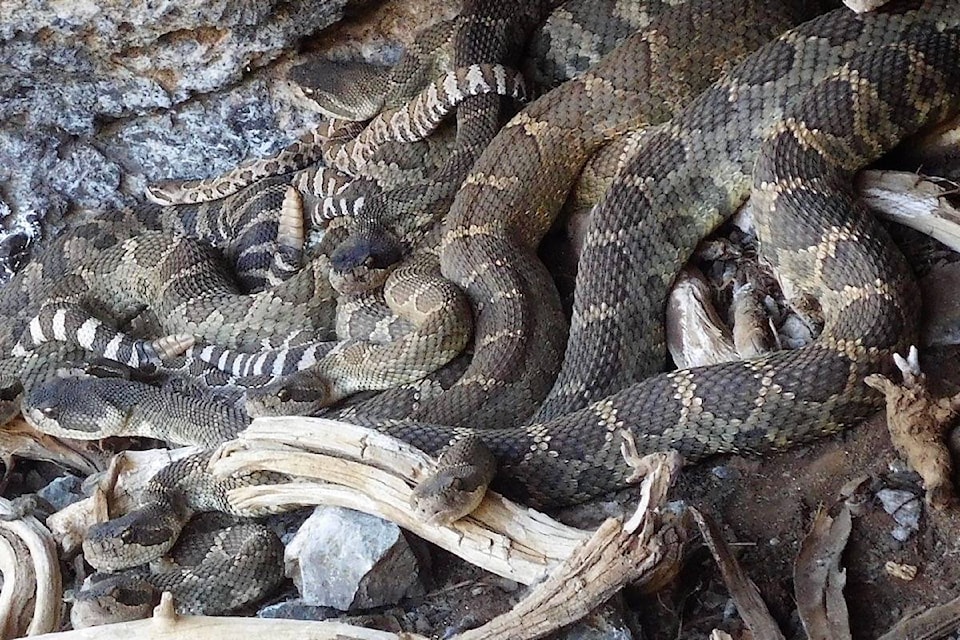Bears are not the only wild creatures coming out of hibernation for the winter: rattlesnakes are also emerging from their dens, and much of the area in our region is rattlesnake country, says Frank Ritcey, the provincial coordinator for WildSafeBC.
“There are several dens in the area,” he says, adding that this region is just about the northernmost limit of where rattlesnakes can live. Over time the dens here have been isolated from other dens, with no trading back and forth of genetic material. DNA sampling is being done on all the dens, to see how long the populations have been isolated from each other. “It’s always interesting to study wildlife at the boundaries of where they can live.”
Ritcey notes that rattlesnake populations have been declining in the area, partly because of building, but mostly because of roads. “As soon as a snake population has to cross a road, they become very vulnerable. Roadkill is a big reason for the decline in population.
“They’re not cute and cuddly, so no one stands up for them,” he continues. “I try to educate the public about what magnificent creatures they are. Female rattlesnakes can go for 19 months without feeding while they’re carrying their young and then after the birth. Snakes can’t have food in their stomach while hibernating. When the females come out in the spring, they’re just thermo-regulating their eggs.”
Ritcey says that rattlesnakes have been out for four weeks or so. “I think we’ve hit the critical mass of heat now. They’re out eating and mating, and will return to their dens in September.”
He has advice for hikers who do not want a close encounter. “If you have a dog, keep it on a leash and on the trail. One or two dogs are bitten by rattlesnakes every year in B.C. And while only 30 per cent of people in the province own dogs, they factor in 50 per cent of rattlesnake bite incidents.”
Hikers should also stay on the trail. “Know where your foot is going, and watch out in tall grass. If you come to a log across the trail, never step over it; step on top of it, check the other side, and then step away from the log.”
He notes that rattlesnake bites are seldom fatal, at least in B.C. If someone does get bitten, he says not to apply ice or a tourniquet, and do not try to suck out the venom. Instead, remove any potentially constricting jewellery or clothing in case of swelling, and immediately phone the nearest hospital.
“Let them know you’re coming, and ask if they have anti-venom in stock. If they do, they can be ready for you, and if they don’t, they can direct you to the nearest hospital that does have it.” He adds that approximately 30 per cent of rattlesnake bites in the province each year are “dry bites” where no venom is released. However, anyone bitten should get into hospital right away for assessment.
While rattlesnakes like hot weather, they do not like it too hot. “In nice places like Ashcroft with lots of sun, rattlesnakes will go underground in the heat of the day and come out in the evening.
“They’re nocturnal hunters, ambush hunters, and they can see in the dark. You want to be cautious in the evening if you’re going out.”
